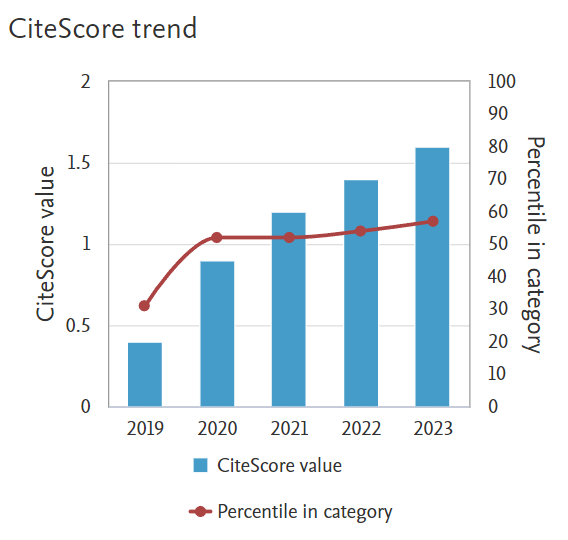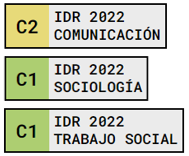Minors trapped in the magical world of augmented reality, advergaming and social networks
Palabras clave:
Advertainment, advergames, social network, Augmented Reality, young people, advertising, advertising literacyResumen
Augmented Reality (AR) provides new opportunities to create attractive settings for minors, as it immerses them in magical interactive worlds, recreates fantastic situations and makes them experience surprising events. Publicity enriched with AR enables virtual and playful interaction with 3D objects, involving consumers and increasing the flow effect. This phenomenon provokes suspicion in the educational environment, as its immersive power increases the uncritical assimilation of advertising discourse. This research analyses the strategies and persuasive resources used in several publicity campaigns with AR, addressed to the Smartphone generation, which is used to advergames and social networks. Finally, some keys are proposed, aimed at training young people in the critical analysis and promoting models of intelligent consumption.
Menores atrapados en el mágico mundo de la realidad aumentada, el advergaming y las redes sociales
Resumen
La Realidad Aumentada (RA) ofrece nuevas oportunidades para crear escenarios publicitarios atractivos para los menores al sumergirlos en mundos mágicos interactivos, recrear situaciones fantásticas y convertirlos en protagonistas de hechos sorprendentes. La publicidad enriquecida con RA posibilita la interacción virtual y lúdica con objetos 3D, logrando involucrar a los consumidores emocionalmente e incrementando el efecto flow. Este fenómeno suscita recelos en el ámbito educativo pues su poder inmersivo aumenta la asimilación acrítica del discurso publicitario. Esta investigación analiza las estrategias y recursos persuasivos adoptados por diferentes campañas publicitarias que integran RA, dirigidas a la generación Smartphone, familiarizada con los advergames e instalada en redes sociales. Finalmente, se proponen pautas para formarlos en el análisis crítico, promoviendo modelos de consumo inteligente.
Descargas
Citas
Álvarez, A. (2014). Perspectiva sobre el contenido de marca. En R. Ron, A. Álvarez & P. Núñez (Coords.). Bajo la influencia del branded content. Efectos de los contenidos de marca en niños y jóvenes (pp. 21-31). Madrid: ESIC.
Bringué, X. (2001). Publicidad infantil y estrategia persuasiva: un análisis de contenido. ZER: Revista de estudios de comunicación, 6(10). Retrieved from http://www.ehu.eus/ojs/index.php/Zer/article/view/6104/0
Cawood S. & Fiala M. (2008). Augmented Reality: A Practical Guide. Denver, USA: Pragmatic Bookshelf.
Del Moral, M.E. (1999). La publicidad indirecta de los dibujos animados y el consumo infantil de juguetes. Comunicar, 13, 220-224.
Del Moral, M.E. (2014, October). Advergames & Edutainment: Fórmulas creativas para aprender jugando. In F. Revuelta, M.R. Fernández, M.I. Pedrera & J. Valverde (Edit.), Keynote of the II International Congress of Video Games and Education (CIVE 2013) (pp. 13-24). Cáceres: Universidad de Extremadura. Retrieved from https://dl.dropboxusercontent.com/u/4318784/Libro_CIVE_13.pdf
Del Moral, M.E. & Fernández, L.C. (2014). “Branding content”: con-jugando entretenimiento y publicidad en escenarios lúdicos y emocionales. En R. Ron, A. Álvarez & P. Núñez (Coords.), Bajo la influencia del branded content. Efectos de los contenidos de marca en niños y jóvenes (pp. 103-116). Madrid: ESIC.
Del Moral, M.E. & Guzmán, A. (2014). CityVille: collaborative gameplay, communication and skill development in social networks. Journal of New Approaches in Educational Research, 3(1), 11-19. doi:10.7821/naer.3.1.11-19
Del Moral, M.E. & Villalustre, L. (2013). Realidad aumentada: experimentando en el aula en 3D. En R. Ron, A. Álvarez & P. Núñez (Coords.). Smarthphones y tablets: ¿enseñan o distraen? (pp. 107- 124). Madrid: ESIC.
Falcón, L. (2013). Publicidad, niños y alfabetización audiovisual: retos y herramientas educativas en la era digital. En R. Ron, A. Álvarez & P. Núñez (Coords.), Niños, adolescentes y redes sociales. #KON3CTADOS O ATRAPA2? (pp. 125-147). Madrid: ESIC.
García-Jiménez, A., López de Ayala, M.C., & Catalina, B. (2013). Hábitos de uso en Internet y en las redes sociales de los adolescentes españoles. Comunicar, 21(41), 195-204. http://dx.doi.org/10.3916/C41-2013-19
Huang, S. & Dinu, L.F. (2010, January). More than an advergame: effects of advergame type and presence of spokes-characters on advergame effectiveness. In American Academy of Advertising. Conference. Proceedings (Online) (pp. 65-66). Minneapolis, USA: American Academy of Advertising.
Okazaki, S., & Yagüe, M. J. (2012). Responses to an advergaming campaign on a mobile social networking site: An initial research report. Computers in Human Behavior, 28(1), 78-86. doi:10.1016/j.chb.2011.08.013
Mallinckrodt, V., & Mizerski, D. (2007). The effects of playing an advergame on young children's perceptions, preferences, and requests. Journal of Advertising, 36(2), 87-100. http://dx.doi.org/10.2753/JOA0091-3367360206
Martínez, J. (2003). Branded content o advertainment. ¿Un nuevo escenario para la publicidad audiovisual?. En N. Mínguez y N. Villagra (eds.). La comunicación. Nuevos discursos y perspectivas (pp. 57-62). Sevilla: Edipo.
Martínez, S., Quintas, N. & San Juan, A. (2012). Tabvertising: nuevas formas publicitarias en las tabletas digitales. Pensar la publicidad, 6(2), 473-487. http://dx.doi.org/10.5209/rev_PEPU.2012.v6.n2.41245
Nelson, M. R., & Waiguny, M. K. (2012). Psychological Processing of In-Game Advertising and Advergaming: Branded Entertainment or Entertaining Persuasion? In L.J. Shrum (ed.) Psychology of entertainment media: Blurring the lines between Entertainment and persuasion (pp. 93-146). New York: Routledge.
Núñez, P. (2013). La nueva generación de nativos digitales y la necesidad de una buena alfabetización digital. En R. Ron, A. Álvarez & P. Núñez (Coords.). Smarthphones y tablets: ¿enseñan o distraen? (pp. 127- 137). Madrid: ESIC.
Núñez, P., Falcón, L., Figuerola, H. & Canyameres, M. (2015). Alfabetización publicitaria: el recuerdo de la marca en los niños. En A. Álvarez & P. Núñez (Coords.). Claves de la comunicación para niños y adolescentes. Experiencias y reflexiones para una comunicación constructiva (pp. 111-131). Madrid: Fragua.
Liao, T. (2015). Augmented or admented reality? The influence of marketing on augmented reality technologies. Information, Communication & Society, 18(3), 310-326. http://dx.doi.org/10.1080/1369118X.2014.989252
Ramos, M. (2006). Cuando la marca ofrece entretenimiento: aproximación al concepto de advertainment. Questiones Publicitarias, 11(1), 33-49. Retrieved from http://www.maecei.es/pdf/n11/articulos/cuando_la_marca_ofrece_entretenimiento_aproximacion_al_concepto_de_advertainment.pdf
Rifon, N. J., Taylor Quilliam, E., Paek, H. J., Weatherspoon, L. J., Kim, S. K., & Smreker, K. C. (2014). Age-dependent effects of food advergame brand integration and interactivity. International Journal of Advertising, 33(3), 475-508. doi 10.2501/IJA-33-3-475-508
Ruíz, S. & Polo, D. (2012). La realidad aumentada como nuevo concepto de la publicidad online a través de los smartphones. Razón y Palabra, 80. Retrieved from http://www.razonypalabra.org.mx/N/N80/V80/02_RuizPolo_V80.pdf
Selva, D. (2009). El videojuego como herramienta de comunicación publicitaria: una aproximación al concepto de advergaming. Comunicación: Revista Internacional de Comunicación Audiovisual, Publicidad y Estudios Culturales, 7, 141-166.
Smith, A. D. (2007). Exploring advergaming and its online advertising implications. International Journal of Business Information Systems, 2(3), 298-311. http://dx.doi.org/10.1504/IJBIS.2007.011981
Steffen, C., Mau, G. & Schramm-Klein, H. (2013). Who Is the Loser When I Lose the Game? Does Losing an Advergame Have a Negative Impact on the Perception of the Brand? Journal of Advertising, 42(2-3), 183-195. doi10.1080/00913367.2013.774598
Terlutter, R. & Capella, M.L. (2013). The gamification of advertising: analysis and research directions of in-game advertising, advergames, and advertising in social network games. Journal of Advertising, 42(2-3), 95-112. http://dx.doi.org/10.1080/00913367.2013.774598
Tur-Viñes, V. & Segarra-Saavedra, J. (2014). Branded content y storytelling. El arte de crear contenidos y contar historias. En R. Ron, A. Álvarez & P. Núñez (Coords.). Bajo la influencia del branded content. Efectos de los contenidos de marca en niños y jóvenes (pp. 117-134). Madrid: ESIC.
Waiguny, M. K., Nelson, M. R., & Terlutter, R. (2012). Entertainment matters! The relationship between challenge and persuasiveness of an advergame for children. Journal of Marketing Communications, 18(1), 69-89. http://dx.doi.org/10.1080/13527266.2011.620766
Descargas
Publicado
Cómo citar
Número
Sección
Licencia
Los autores/as que publiquen en esta revista aceptan las siguientes condiciones:
- Los autores/as conservan los derechos de autor.
- Los autores/as ceden a la revista el derecho de la primera publicación. La revista también posee los derechos de edición.
- Todos los contenidos publicados se regulan mediante una Licencia Atribución/Reconocimiento-SinDerivados 4.0 Internacional. Acceda a la versión informativa y texto legal de la licencia. En virtud de ello, se permite a terceros utilizar lo publicado siempre que mencionen la autoría del trabajo y a la primera publicación en esta revista. Si transforma el material, no podrá distribuir el trabajo modificado.
- Los autores/as pueden realizar otros acuerdos contractuales independientes y adicionales para la distribución no exclusiva de la versión del artículo publicado en esta revista (p. ej., incluirlo en un repositorio institucional o publicarlo en un libro) siempre que indiquen claramente que el trabajo se publicó por primera vez en esta revista.
- Se permite y recomienda a los autores/as a publicar su trabajo en Internet (por ejemplo en páginas institucionales o personales), una vez publicado en la revista y citando a la misma ya que puede conducir a intercambios productivos y a una mayor y más rápida difusión del trabajo publicado (vea The Effect of Open Access).


















